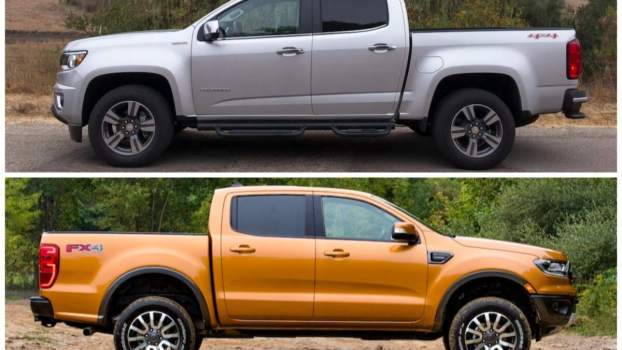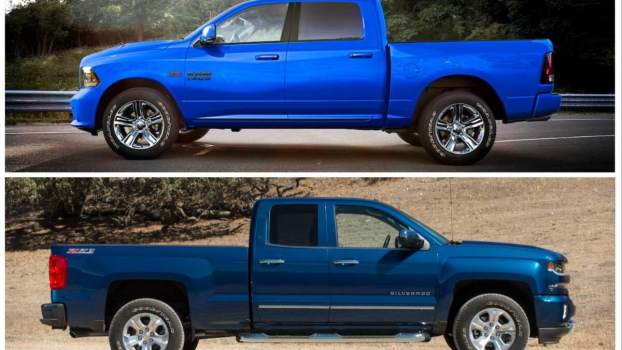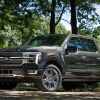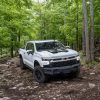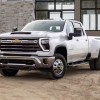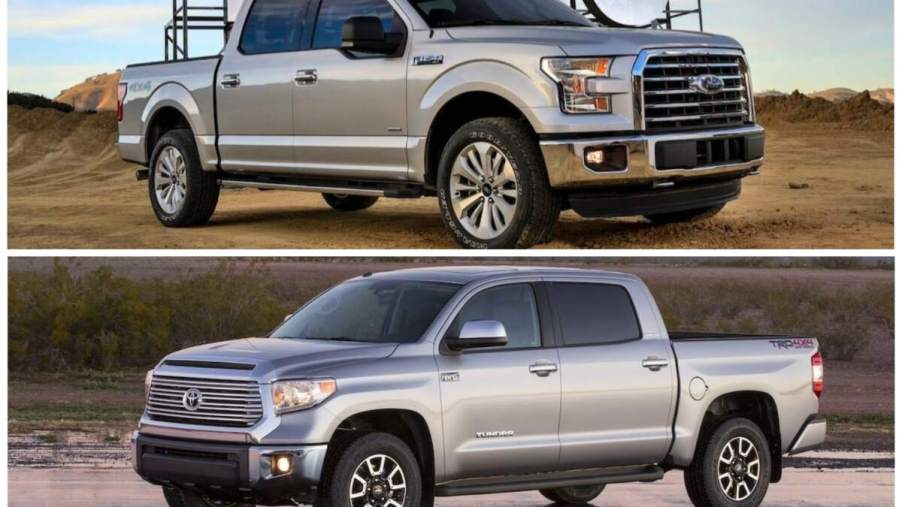
Ford F-150 vs. Toyota Tundra: Which $25,000 Used Truck Is the Better Buy?
The 2017 Ford F-150 and 2017 Toyota Tundra are solid used trucks in the $25,000 range. Both have reputations for performance, reliability, and utility. But which full-size pickup gives you the most bang for your buck? This comprehensive 2017 Ford F-150 vs. 2017 Toyota Tundra comparison will examine key aspects, from towing capacity and fuel efficiency to interior features. Whether you need a workhorse for the job site or a reliable family hauler, discover which used pickup is better for you.
| 2017 Ford F-150 | 2017 Toyota Tundra | |
| Average Used Price Range | $18,600–$44,600 | $24,500–$42,700 |
| Engines | 2.7L turbocharged V6 EcoBoost 3.5L turbocharged V6 EcoBoost 3.5L Ti-VCT V6 5.0L V8 | 4.6L V8 5.7L V8 |
| Horsepower + Torque | 2.7L V6 EcoBoost: 325 hp, 375 lb-ft 3.5L V6 EcoBoost: 375 hp, 470 lb-ft 3.5L Ti-VCT V6: 282 hp, 253 lb-ft 5.0L V8: 385 hp, 387 lb-ft | 4.6L V8: 310 hp, 327 lb-ft 5.7L V8: 381 hp, 401 lb-ft |
| Transmission + Drivetrain | 6-speed automatic, 10-speed automatic + RWD, 4WD | 6-speed automatic + RWD, 4WD |
| 0–60 Mph Acceleration + Top Speed | 2.7L V6 EcoBoost: 6.6 seconds, 105 mph 3.5L V6 EcoBoost: 6.2 seconds, 107 mph 5.0L V8: 7.0 seconds, 105 mph | 4.6L V8: 7.1 seconds, 108 mph 5.7L V8: 6.4 seconds, 110 mph |
| Fuel efficiency | 2.7L V6 EcoBoost: 19/26 mpg city/hwy 3.5L V6 EcoBoost: 17/23 mpg city/hwy 3.5L Ti-VCT V6: 18/24 mpg city/hwy 5.0L V8: 15/22 mpg city/hwy | 4.6L V8: 15/19 mpg city/hwy 5.7L V8: 13/17 mpg city/hwy |
| Payload + Towing Ratings | 2.7L V6 EcoBoost: 2,210 lbs + 8,500 lbs 3.5L V6 EcoBoost: 3,270 lbs + 12,200 lbs 5.0L V8: 3,270 lbs + 11,100 lbs | 4.6L V8: 1,600 lbs + 6,800 lbs 5.7L V8: 2,060 lbs + 10,500 lbs |
2017 Ford F-150 pros and cons
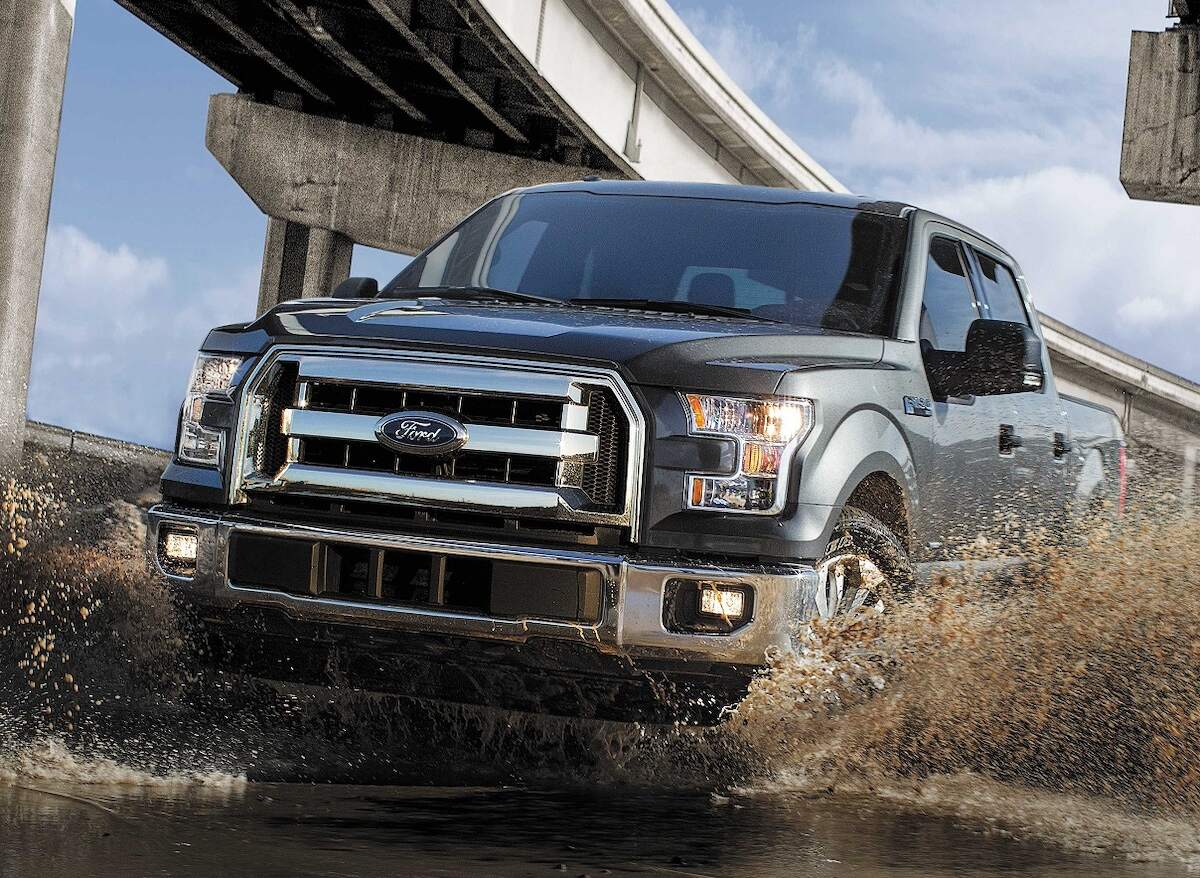
Ford offered the 2017 F-150 with an array of engine choices, including two EcoBoost versions for enhanced fuel efficiency. Notable for its lightweight aluminum construction, the F-150 excels in payload and towing capabilities.
Pros:
- Multiple engine options for tailored performance
- High payload and towing capacities
- Fuel-efficient EcoBoost engine options
Cons:
- Aluminum body less durable than steel
- Higher average price for range-topping trims
2017 Toyota Tundra pros and cons
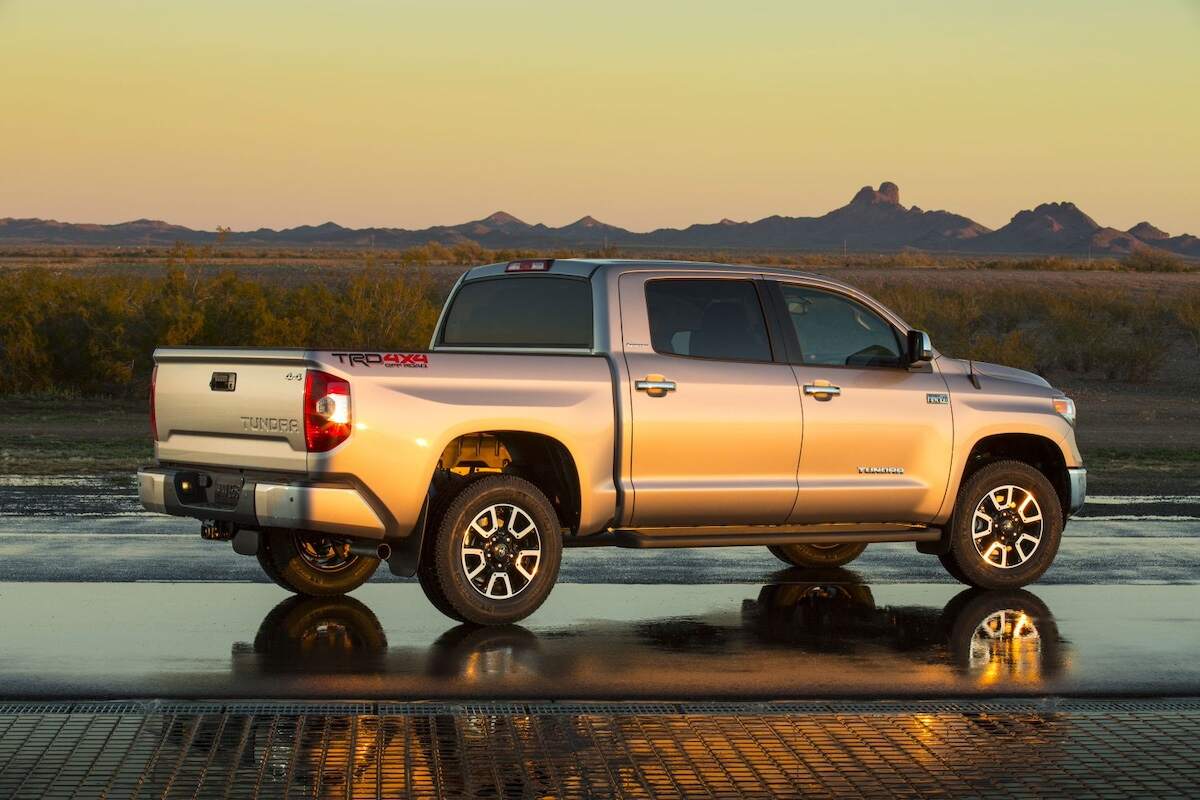
The 2017 Toyota Tundra is a robust full-size truck boasting durability, reliability, and a high resale value. Though it offers fewer engine options than its Ford rival, the Tundra’s V8s provide plenty of power. Toyota’s half-ton truck is a strong contender in straightforward performance.
Pros:
- Potent V8 engines
- Reliable and durable
- User-friendly interior
Cons:
- Limited engine choices
- Lower fuel efficiency than rivals
2017 Ford F-150 vs. 2017 Toyota Tundra: Driving and performance
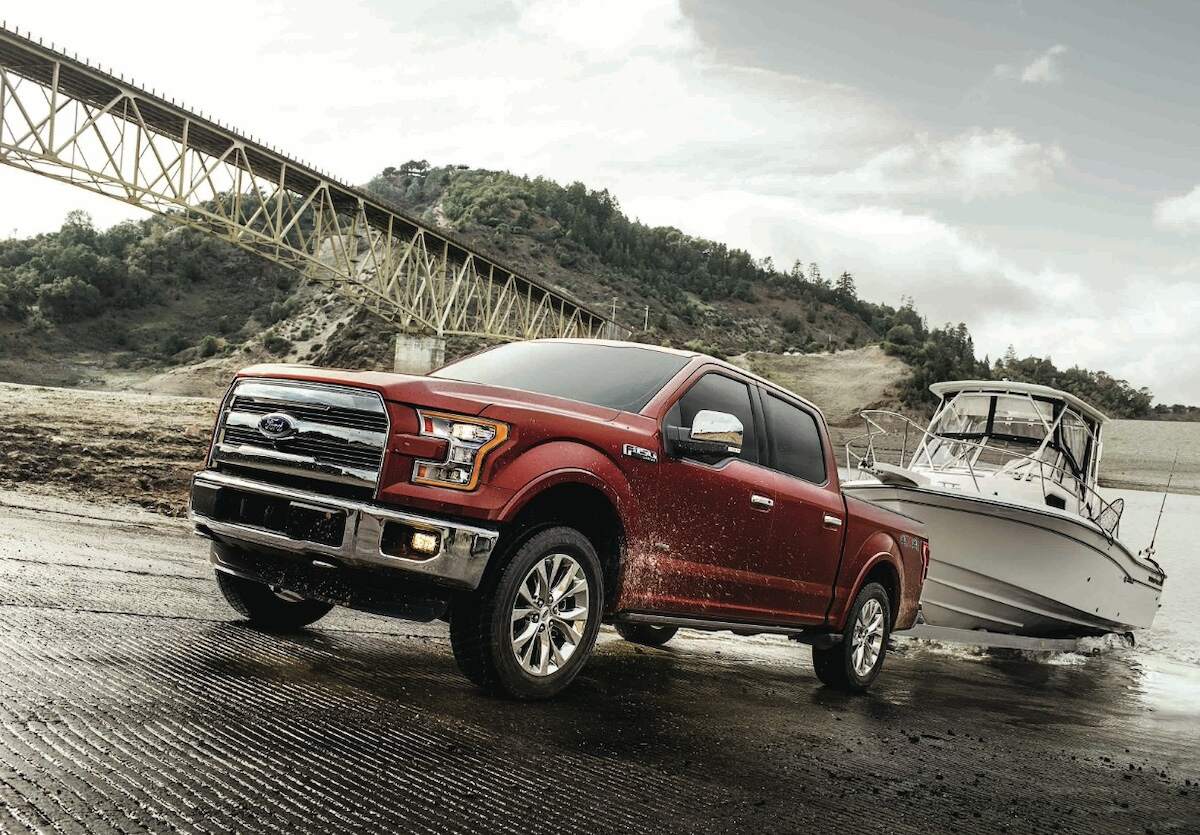
The 2017 Ford F-150 offers a diverse engine lineup, with options like a 3.5-liter V6 EcoBoost harnessing 375 hp and 470 lb-ft of torque. That allows a top tow rating of 12,200 pounds.
Meanwhile, the 2017 Toyota Tundra’s most potent engine, a 5.7-liter V8, produces 381 hp and 401 lb-ft of torque. It’s rated to tow up to 10,500 pounds.
While the F-150 provides greater versatility and higher towing capabilities, the Tundra focuses on straightforward, robust performance through its V8 options.
2017 Ford F-150 vs. 2017 Toyota Tundra: Interior and tech
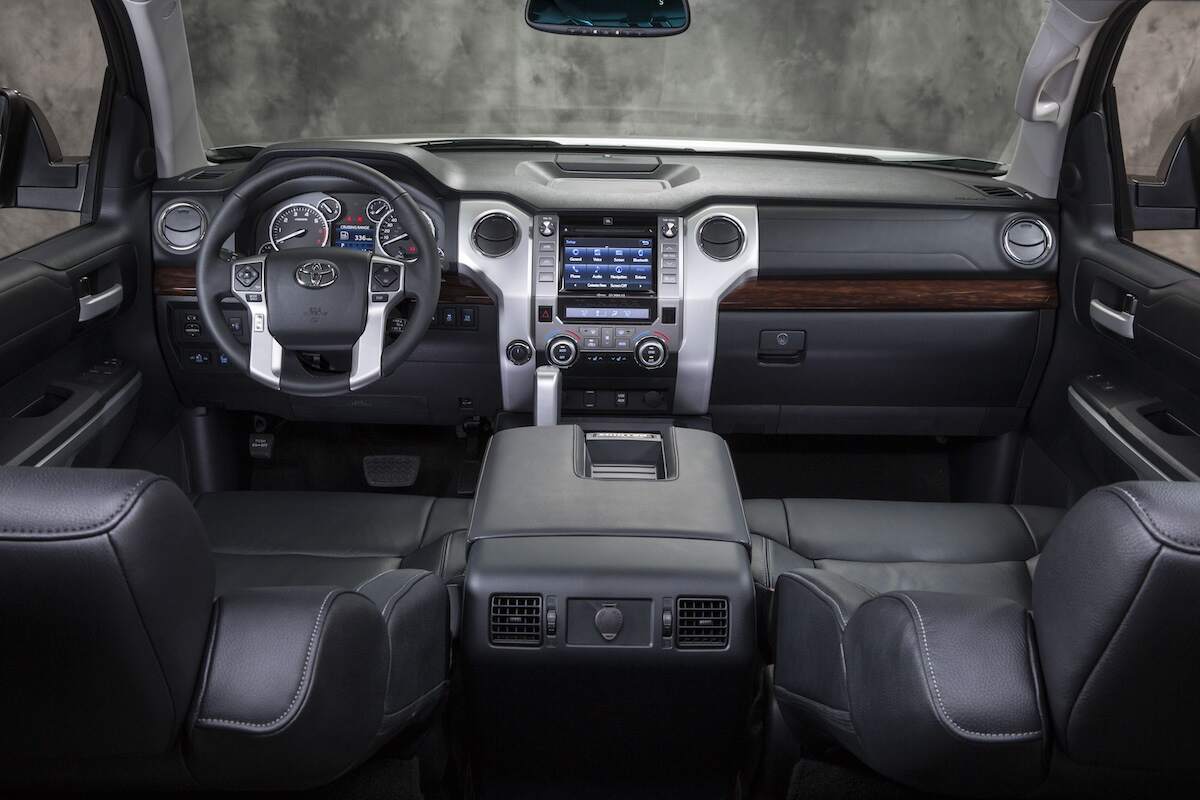
The 2017 Ford F-150 offers advanced tech features through its Sync 3 infotainment system with an 8.0-inch touchscreen, including Apple CarPlay and Android Auto integration. Additionally, some models have upgraded amenities like heated and cooled seats.
Conversely, the 2017 Toyota Tundra’s infotainment system is dated, with only a 6.1-inch touchscreen and no Apple CarPlay or Android Auto connectivity. However, its controls are intuitive, and a 7.0-inch touchscreen is standard in the SR5 and higher trims.
Though both trucks seat up to six passengers, the F-150 provides slightly more rear legroom and a more modern interior. However, this aging Tundra model has a user-friendly layout and durable materials.
2017 Ford F-150 vs. 2017 Toyota Tundra: Trim levels and features
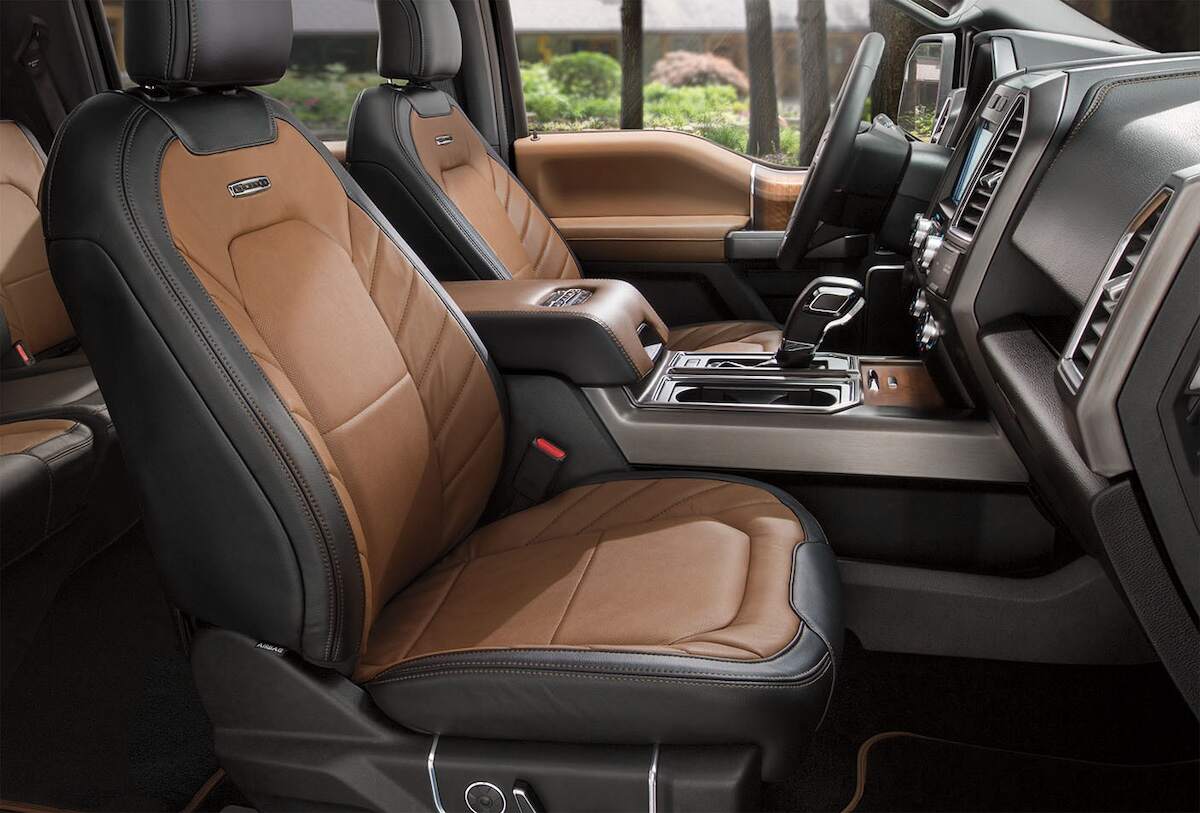
The 2017 Ford F-150 offered three cab styles: Regular Cab, SuperCab, and SuperCrew. Its numerous trim levels range from the basic XL to the luxurious Limited and the off-road-ready Raptor. Attractive options include a 10-speed automatic transmission and advanced driver-assistance systems like adaptive cruise control.
- XL
- XLT
- Lariat
- King Ranch
- Platinum
- Limited
- Raptor
Meanwhile, the 2017 Toyota Tundra came in Regular Cab, Double Cab, and CrewMax styles. Despite offering one fewer trim level than the F-150, the Toyota truck includes standard features like an integrated trailer brake controller even on the SR base model.
- SR
- SR5
- Limited
- TRD Pro
- 1794 Edition
- Platinum
While the F-150 provides customization through various packages and options, the Tundra focuses on including essentials as standard equipment across the lineup.
Which used pickup truck is the right fit for you?
U.S. News scores the 2017 F-150 higher, with an 8.8 out of 10, versus the Tundra’s 7.3. Similarly, J.D. Power gives the Ford pickup an overall 84 out of 100, ranking it first among large light-duty pickups for that model year. Meanwhile, the Tundra takes a close second with 82.
Ultimately, choosing between the Ford and Toyota trucks comes down to your priorities. Most used-car buyers want the best value for less money.
If you seek versatility, higher towing capabilities, and advanced tech, consider the 2017 F-150. On the other hand, if you value straightforward performance, durability, and fewer frills, the capable 2017 Tundra could be a better fit. Both have their merits, so consider which features best meet your needs.
Regardless of the used truck you choose, obtain a vehicle history report and have a trusted mechanic perform an inspection to uncover potential problems before purchasing. Also, prices vary depending on trim level, mileage, overall condition, and location.
